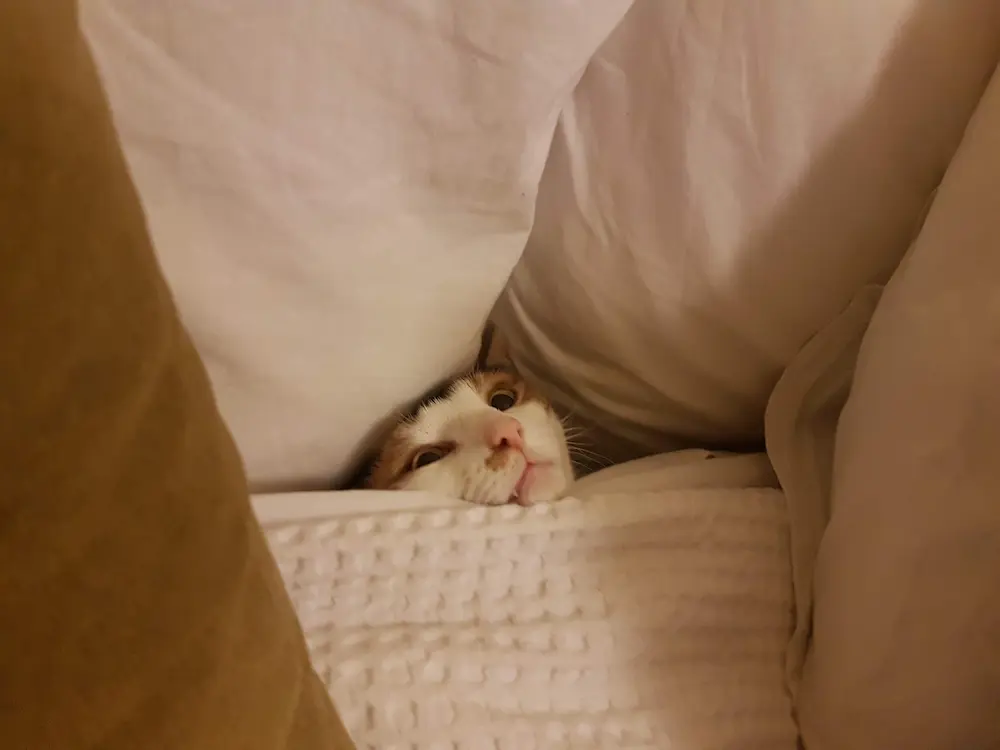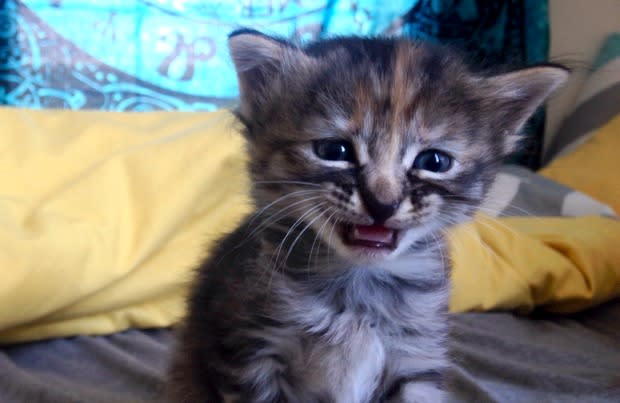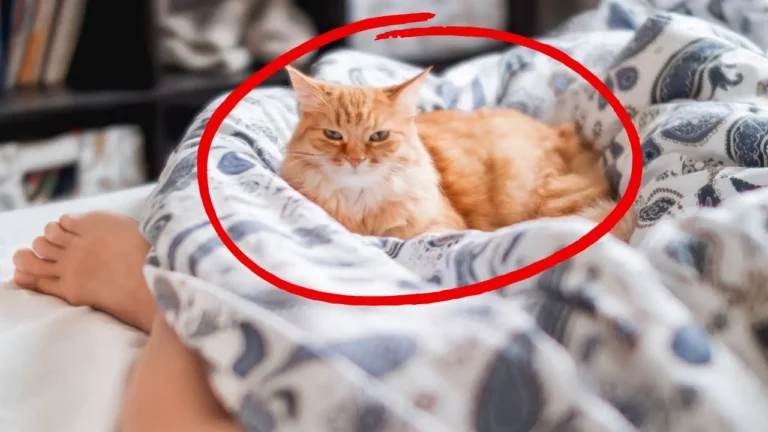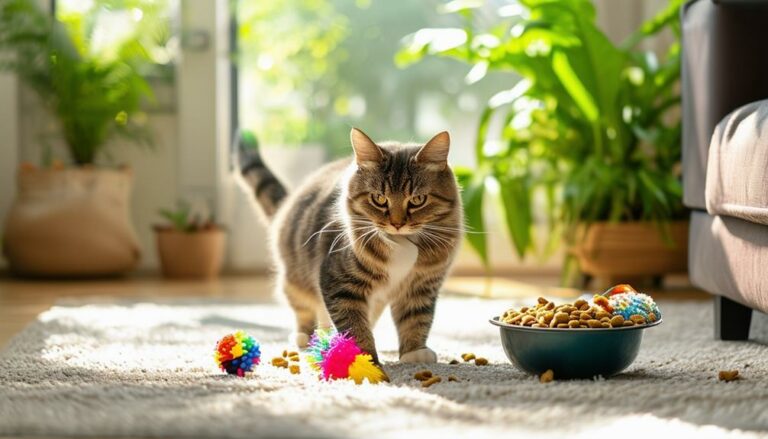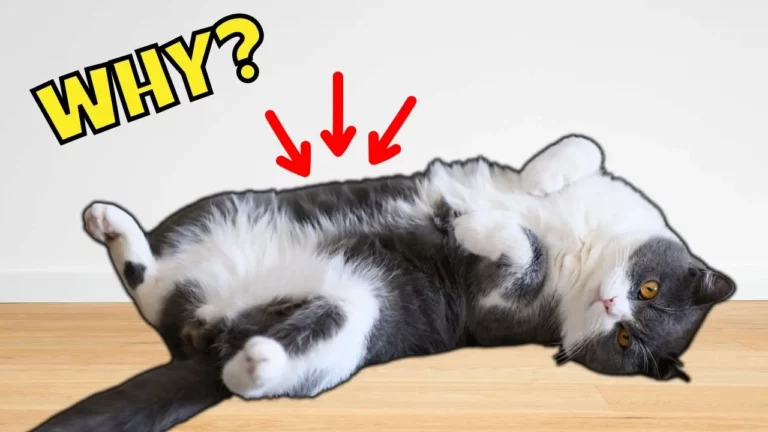Can Cats Suffocate Under Blankets? The Truth Revealed
I’ve often wondered if cats can suffocate under blankets, especially since my own
While it seems like a important habit, there are actually several factors at play that could pose a risk to our
Let’s explore the different blanket types, signs of distress, and expert advice to make sure our furry pals are truly safe and comfortable.
Feline Respiratory System
Understanding how a
Their respiratory system comprises the nose, trachea, lungs, and diaphragm, working together to guarantee efficient gas exchange.
When a
Blankets might seem like a potential hazard, but cats are adept at managing their environment.
Their respiratory system is quite efficient, and they can usually find ways to ensure they get enough air.
However, it’s still important to monitor them to guarantee they’re comfortable and not experiencing any distress.
Natural Instincts
Cats’ natural instincts play a significant role in making sure they don’t suffocate under blankets.
From birth, cats are equipped with powerful survival instincts. One of these is their acute awareness of their environment.
Cats have a remarkable ability to sense danger, including the risk of suffocation. If they find themselves in a situation where breathing becomes difficult, their instincts prompt them to move to a safer spot.
Additionally, cats are skilled at moving through tight spaces.
Their flexible bodies and sharp senses make them excellent at finding their way out of potentially hazardous situations. Even when a
Moreover, cats are naturally curious and cautious creatures. They tend to explore their environment thoroughly before settling down. If a blanket poses any risk, such as being too heavy or restrictive, a
These instincts are deeply ingrained, enabling cats to make decisions that prioritize their safety.
Blanket Types and Risks
Not all blankets are created equal, and some types pose more risks to cats than others. Heavy, thick blankets, for example, can be particularly dangerous.
These blankets can make it difficult for a
Weighted blankets, which are designed to provide a sense of security for humans, can also be a hazard for cats due to their substantial weight.
On the other hand, lighter blankets made of breathable materials like cotton or fleece are generally safer. They allow more air to circulate, reducing the risk of suffocation.
However, even with lighter blankets, it’s important to make sure your
Blankets with loose threads or big holes can also be risky.
Cats can get tangled in the threads or stuck in the holes, leading to panic or injury.
Electric blankets should be approached with caution as well; the cords and the heating elements inside can pose a danger if chewed or damaged.
Signs of Distress
When a
These signs are important to recognize because they indicate that your
If your
Loud meowing is another clear indicator; cats often vocalize when they’re in distress, so if you hear persistent loud meows, it’s time to check on them immediately.
Heavy breathing is a more subtle but serious sign of distress.
If your
Additionally, watch for any signs of lethargy or unresponsiveness; these could indicate that the situation has become critical.
Always keep an eye out for these behaviors, especially if your
Being observant can help you make sure your beloved pet stays safe and comfortable, preventing any potential dangers from becoming serious issues.
Expert Insights and Advice
Veterinarians often suggest keeping a close eye on cats that enjoy burrowing under blankets to make sure they don’t face any breathing difficulties. As a
Experts emphasize that while most cats can navigate their way out from under a blanket, certain factors can increase the risk of suffocation. For instance, very thick blankets or weighted blankets can pose more of a challenge for a
It’s also important to take into account the individual health and behavior of your
Older cats or those with respiratory issues might have a harder time if they get trapped under heavy fabric.
Veterinarians recommend providing alternative cozy spots, like
If you notice your
Conclusion
So, while cats love the cozy comfort of blankets, we need to be mindful of the risks. Heavy, thick blankets can pose a suffocation hazard, so it’s best to opt for lighter, breathable options.
Always keep an eye out for signs of distress like frantic movement or heavy breathing. By monitoring them and providing alternative cozy spots, we can guarantee our furry companions stay safe and comfortable.
Remember, their safety is in our hands!
